Unclear circumstances, unfair conditions, but the ultimate truth. The year’s most unfair group test to beat its way through the fog and marketing hype surrounding the wheelsize chaos! The mud’s flying, the chain’s rattling, and then suddenly you recognize the dreaded crack of the frame breaking… but that’s just a minor problem these days. What’s much worse is actually trying to navigate your way through the fog to find which bike to buy. With endless categories that split cycling into every potential discipline or even ride type, there are wheel sizes and tyre sizes being touted, from 26”, 27.5”, 27+, 650B, 29”, 29+, tour, super tourer, trail, all-mountain, super all-mountain, enduro, enduro light, freeride light… which direction are we supposed to take? And while the answers should be pretty easy, it doesn’t seem like the marketing professionals, the magazines, or the tech geeks want to accept this.

We are the first to admit that we love progress, new technology, and advancements, but even we’re a little in awe at just how quickly the bike industry churns out the latest innovation – it’s not only confusing for the industry as well, but also presents a real challenge for consumers. For retailers, there’s uncertainty that comes hand in hand with the excitement – after all, new standards and sizes might mean a premature end to sales of stock they’ve already got their hands on. For consumers, you might end up being presented with the shop’s now-redundant cast-offs. However, good, decent retailers can both discount and counsel, seeing the potential in both these acts.
Over the past few years, the amount of progress within the world of mountain bikes has been huge. As suspension systems improved, components got lighter, and frames more efficient, the lines between the once-clear categories that used to put us all firmly into our respective riding places became blurred. As a result, our purchasing decisions can no longer be purely based on number crunching. And that’s exactly what this test has shown us as we put identical models from the same manufacturer up against each other – the differences aren’t so much in the names or the specs, but purely the wheel and tire sizes.
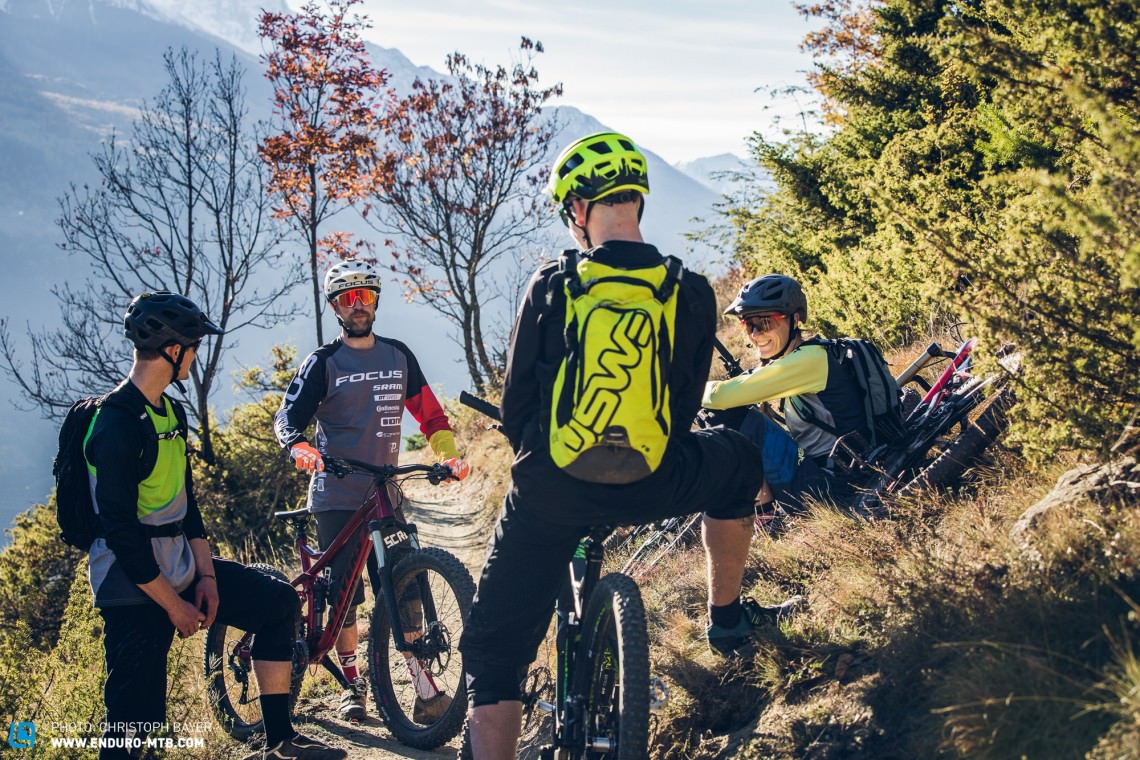
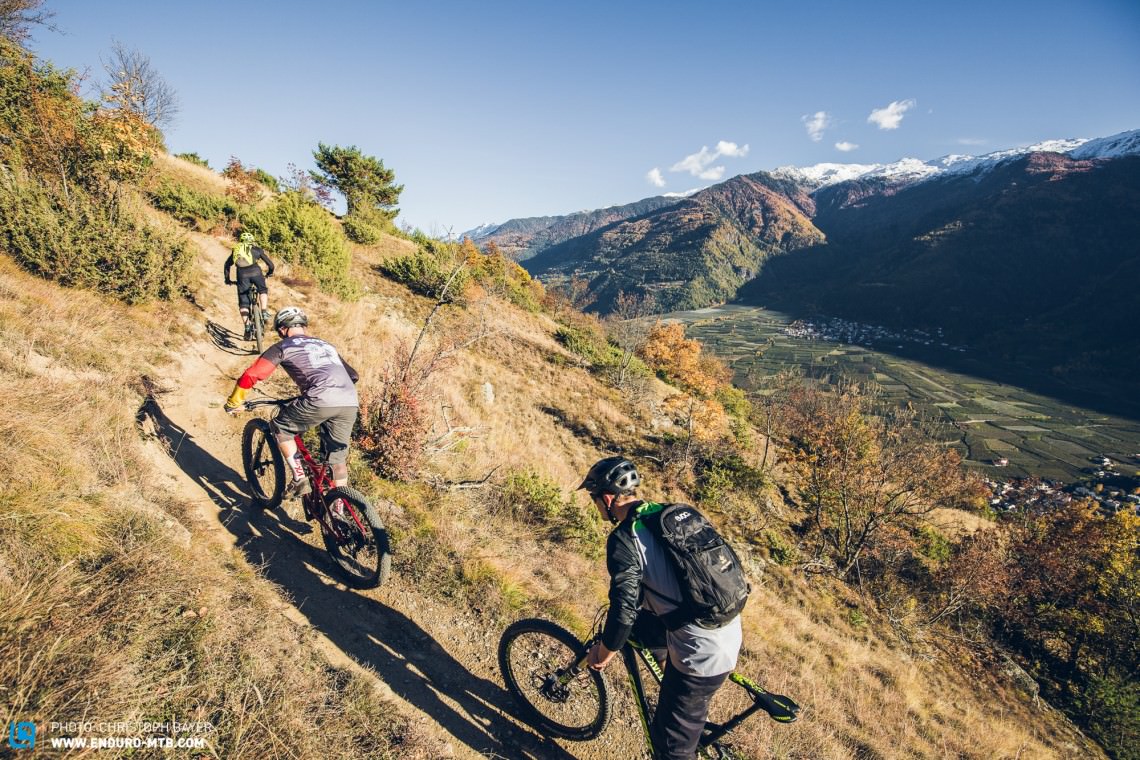
Plus bikes, or bikes with plus-size tyres, are the trend for 2016. Despite many assumptions, we’re not talking about a new wheel size measurement. The ‘Plus’ (aka B+, 27.5+, or 29+) represents the width of the tyres, which can be up to 3.0” on rims that measure up to 50 mm wide. On paper, their design unites the grip of voluminous fat tyres with the agility of the narrower ones, thereby delivering yet more traction and stability without being overly bulky. But does it work in reality? Has the bike industry succeeded in producing something wholly unthinkable for cars – have they designed a tractor that behaves like a Ferrari?
Before we delve even further into the topic of plus-size tyres, it’s crucial that no one overlooks one detail: we’re not buying a wheel or tyre size, we’re buying a bike. And when you set out to buy a bike, there are some fundamental questions you should ask yourself: how good am I? What sort of style do I ride with? What do I expect from my bike? Where do I mainly ride?
The answers to these questions are paramount to finding a suitable model. These days, you’re unlikely to find a really bad bike – but you might come across the odd concept or two that just doesn’t suit you. Think about it: racers have to take elements into consideration that are different from someone who’s just after a bike for fun loops on their local home trails, or even from a long-distance rider who’s planning on spending hours in the saddle crossing the Alps. Of course, wheel sizes do make a difference here – but the whole package is definitely more important.
Apples and pears – the test
You could argue we’re comparing apples with pears in this group test, and you’d be right. Even prior to the testing, our office rapidly descended into heated discussions attempting to define the exact direction and purpose of the test. Those buying bikes today should pay more attention to the complete bike, rather than the tyre size, right? And that’s exactly what we decided to look at. We never planned on crowning a victor in this group test; our aim was to show you exactly how great the differences can be between bikes, and how you can choose the right one.
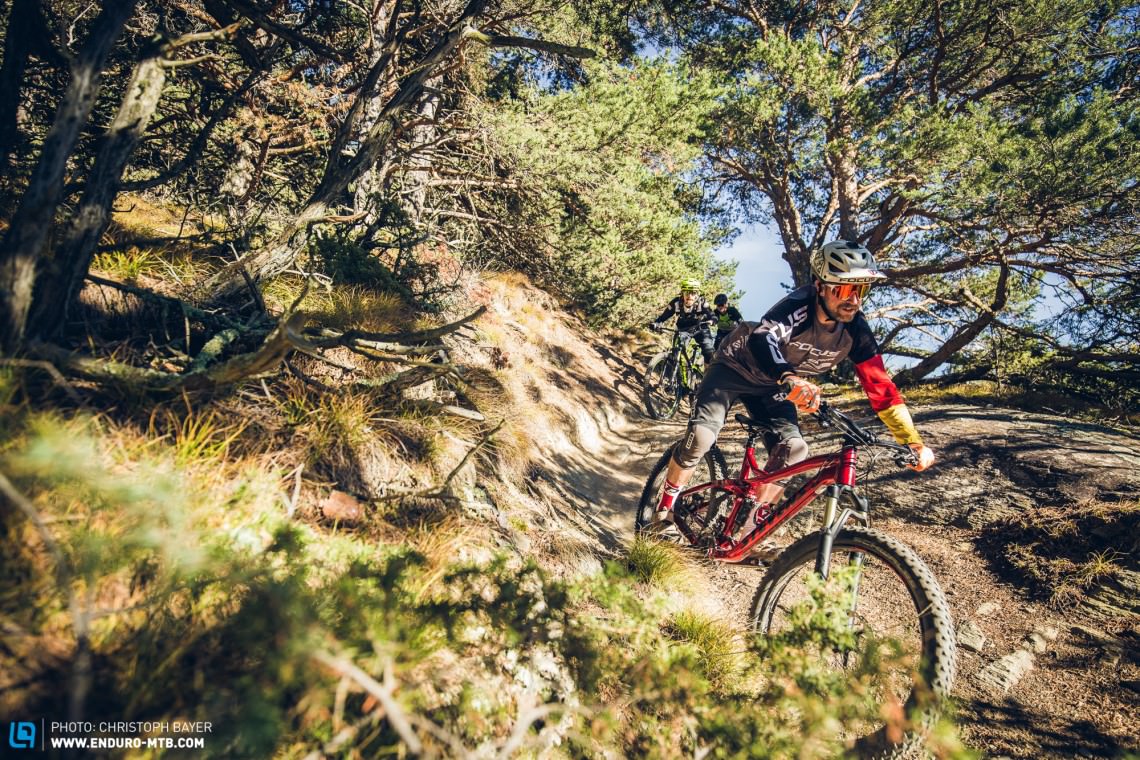
Lab analysis – no thanks!
Who decides which lab stats are good and bad, and to what extent can this data even help us in reality? Of course, we’re 100% advocates of hard facts, but we could see that a sterile, purely lab-based comparison wouldn’t help us in this group test; it was far more important for the riders to assess how they felt the tyres actually rode.
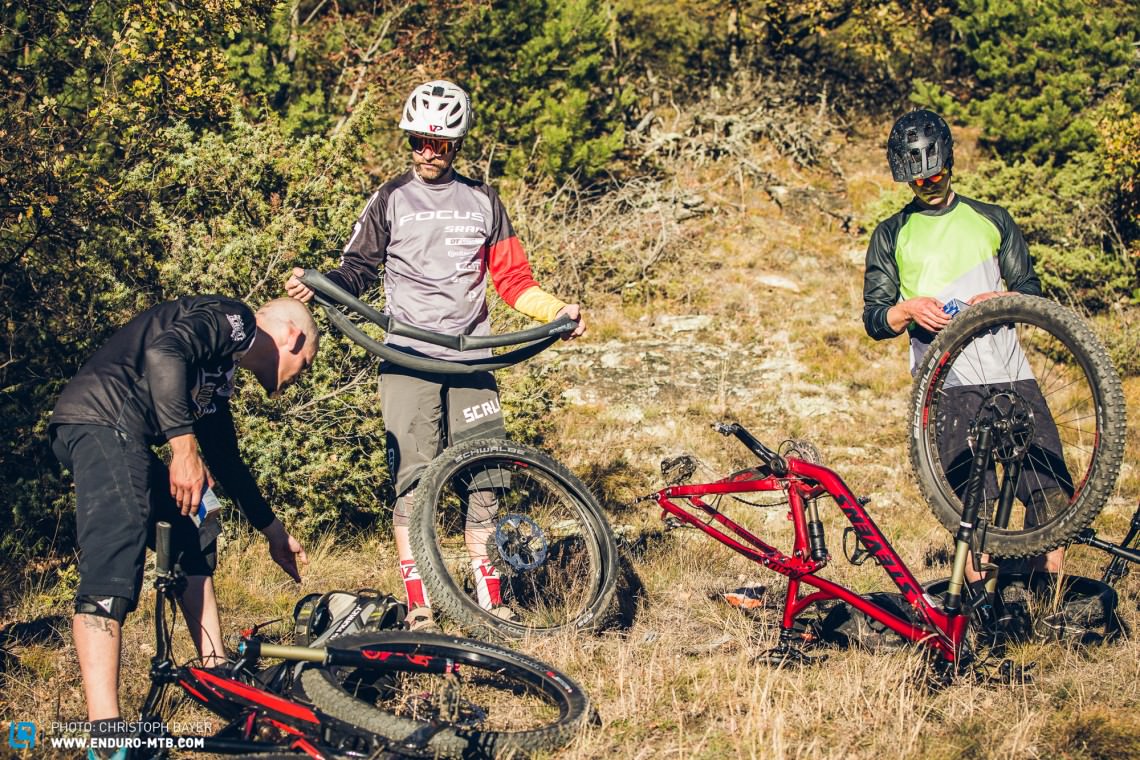
Our test team and test track
Idyllic Latsch, in South Tyrol, provided the perfect conditions for this test. The test crew included pros and amateurs, reflecting the needs and wants of broad a spectrum of riders. Also part of the team was the current German Enduro Champion, Fabian Scholz, who relished the diverse mountainous test tracks around Latsch. Each ride served up a medley of terrain, with everything from berms, rock gardens, roots, dust, and loamy terrain represented, giving a taste of virtually any ride.


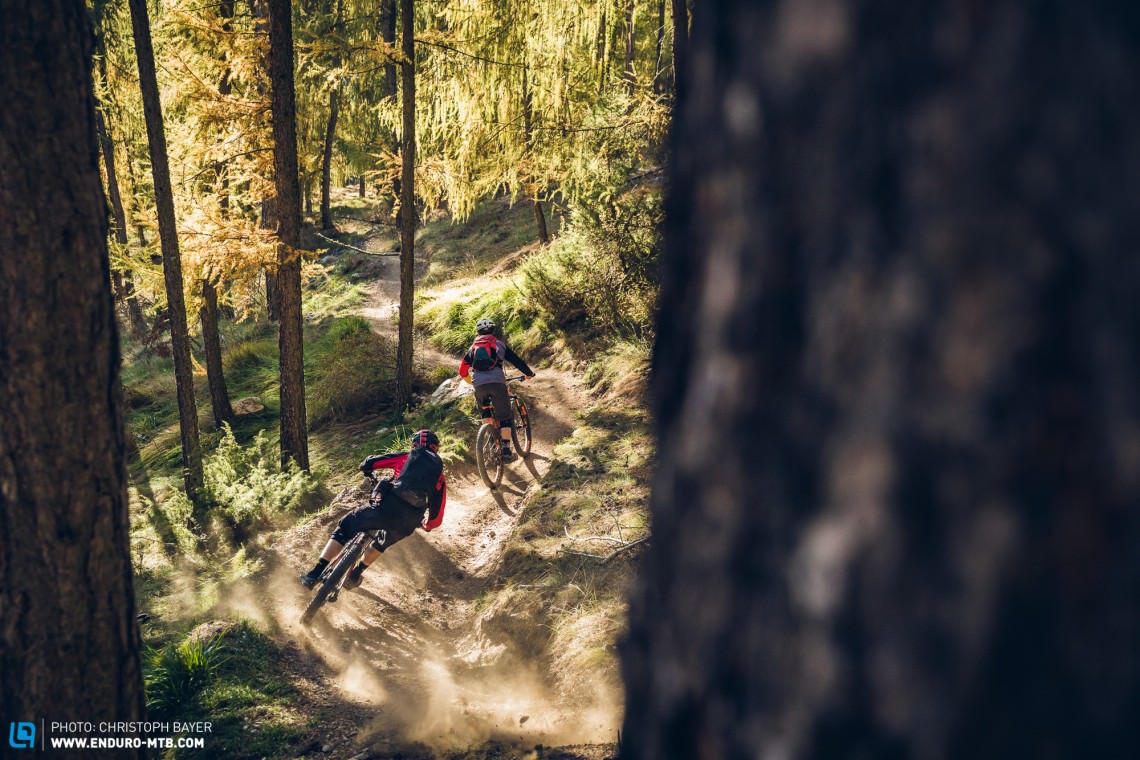
Take a look at the bigger picture
How a bike rides in reality can never be purely reduced to number crunching. Neither the geometry stats, the wheel size, nor the amount of travel can really reveal how a bike will handle the trails. Proof of this is the fact that despite having almost identical travel, no two bikes in this group test behaved the same. We had agile and playful ones, smooth 27.5ers, and harder-to-handle cumbersome rides. There were 29ers that you would willingly ride a marathon on despite their 140 mm of travel.
How they ride
If there’s one certainty about plus-size tyres, then it’s this: the tyres offer a level of grip that has never been encountered before while still managing an agile handling package (in comparison to fat bikes). This is one truth to have come out of the marketing spiel. The term ‘braking point’ takes on a whole new meaning in loam, and the tyres still keep a planted, confident grip on gnarly, off-camber roots. Both the pros and the amateurs found this extra grip a game-changer. But there had to be a drawback, and all the riders could sense the tyres’ tendency to deform on both berms and compressions, as well as when riding on super loose, muddy ground due to the wider surface area. This unnerved all of our testers. However, on the plus side, the climbing ability of the bikes on technical ascents is improved thanks to the traction from the chubby tyres and their barely noticeable high rolling resistance. As a criticism here we’d have to mention the extra weight, which makes accelerating more of a task.
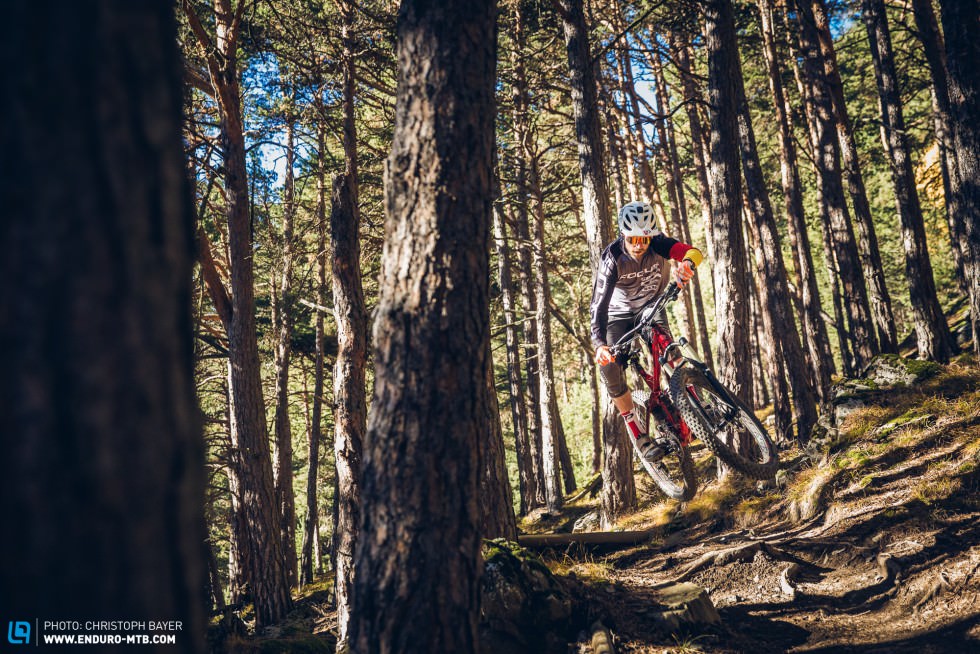
Slow down, Baby
When it comes to plus-size tyres, there’s only limited truth in the saying that ‘speed means safety.’ At high speeds, there are two negative factors to consider: the handling becomes sloppy, and there’s a pretty noticeable bounce effect which affected most of the tyres due to their low amount of natural damping. Fast riders really had to wrench at the bars to keep their line choices on super- rocky, technical sections purely because the tyres just wouldn’t keep planted and stay on line. Once you slow down though, the familiar image of the plus-size tyres returns and their stability once more reigns supreme, overshadowing any regular tyre.

The right air pressure
The decisive parameter for a plus-size tyre revolves around its air pressure. Quite frankly, nothing else can impact their performance more than the air pressure. Even 0.1 bar, or less than 1.5 psi, can turn a perfectly set-up bike into an unrideable beast – and vice versa. It’s difficult to make any sweeping recommendations here, as the correct air pressure can vary drastically based on the tyre model, the rim width, and even your air pressure gauge. Even in our testing we had discrepancies of up to 0.2 bar purely based on how we measured the pressure. Judging by our Flaig pressure gauge, the optimal air pressure (depending on the tyre, rims, rider’s weight and style) was between 0.9 and 1.2 bar. To nail your own personal set-up, we recommend increasing and decreasing the pressure in tenths from a starting point at 1.0 bar. Using the same pressure gauge, try to bridge the perfect compromise between grip and sponginess.

Is bigger really better?
There’s one trend floating around at the moment that can’t be ignored: wide rims. As the tyres have more support, there’s less chance of them deforming, and the air volume can be increased. During this test we used rims with an inner diameter of 30 to 50 mm and tyres of 2.8” to 3.0” from various manufacturers. Our result: Wider doesn’t necessarily mean better for plus bikes. Why? With 50 mm rims, the weight increases and the handling becomes sluggish. Moreover, the side knobs end up being too high, which negatively impacts the tyres’ ground footprint. The tyres on the 50 mm rims also kept trying to deform. The optimum consisted of a 40 mm rim with a 2.8” tyre, although the 30 mm models worked a treat and proved better at accelerating (due to their lower weight).
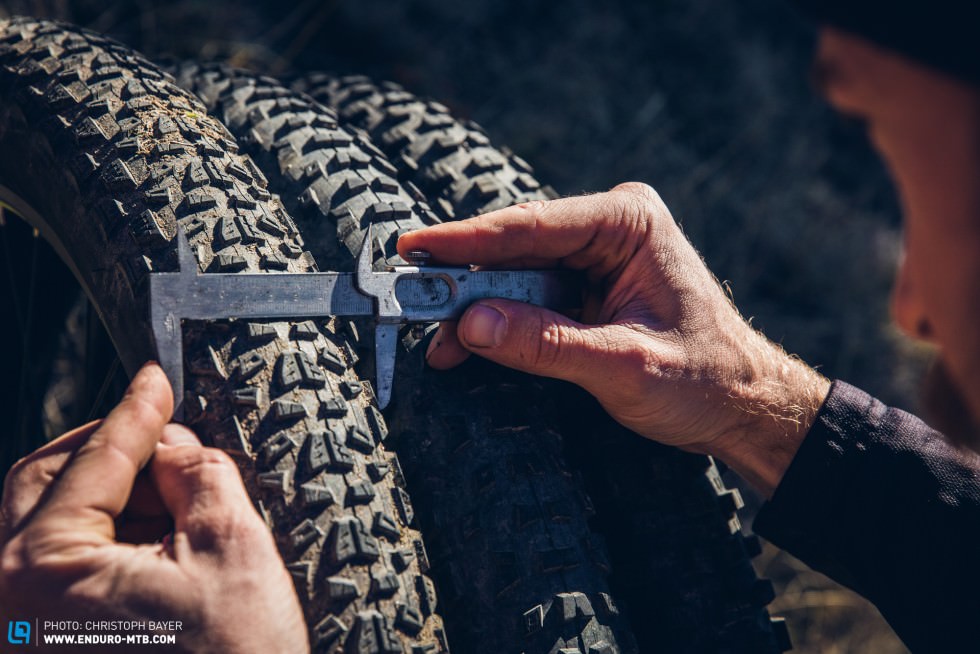
Where the fun ends – the weight
While our test fleet only had three bikes, one thing was for certain: bikes with plus-size tyres will only really work if their weight is kept to a minimum – but that comes at a cost. Both the carbon test bikes proved far more agile, more nimble on the descents, and more efficient on the climbs in comparison to the aluminium test bike, which weighed around 2kg extra and came in at less than half the price of the carbon ones.
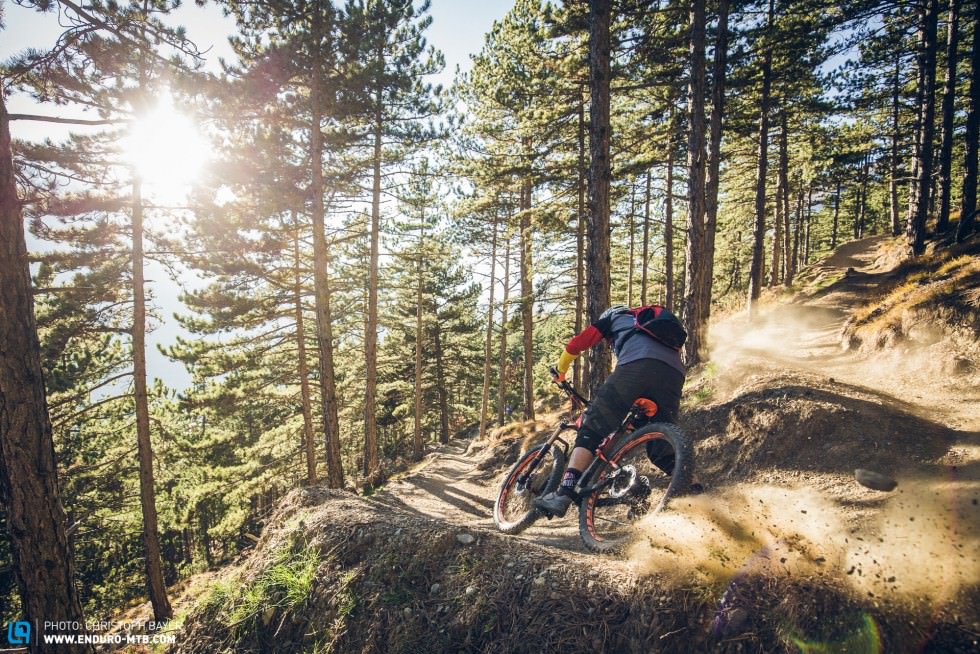
The crucial aspect – the tyres
The point of contact to the ground, and the heart of any plus bike: the tyres. In our test, we didn’t just put various tyre models through the wringer, but we also looked at multiple widths. The findings: 3.0” tyres barely offer any more grip than a 2.8” model, which – given their extra weight – rules out our interest in them. Even low-profiled tyres offer huge amounts of grip, and if you’re not into mending a puncture every five minutes, then tubeless is mandatory.
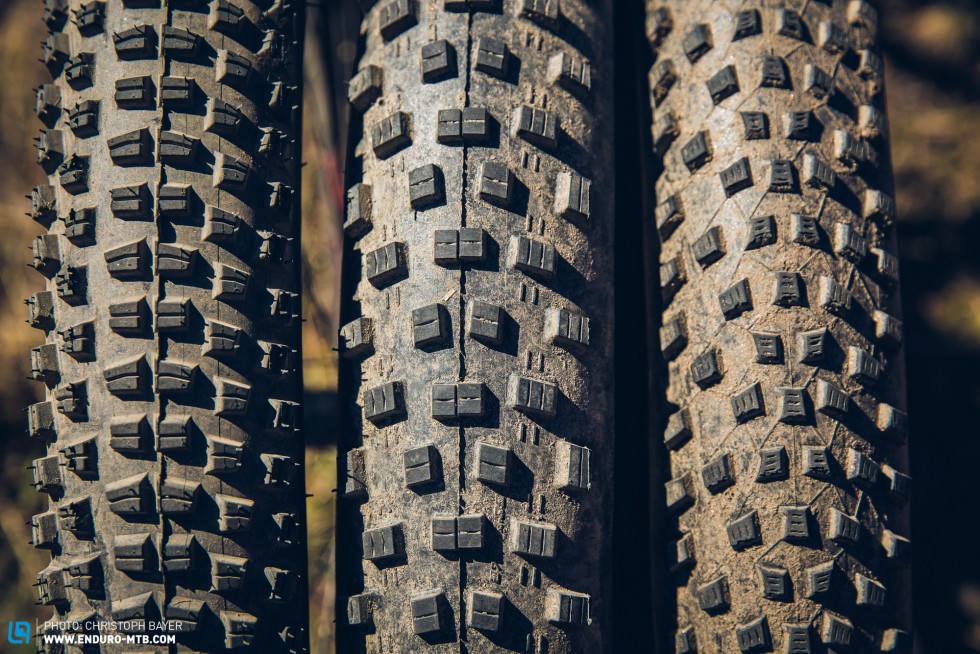
The Bike Battles
Specialized Stumpjumper FSR Expert 650b vs. 6Fattie
Read our full comparison test between the Specialized Stumpjumper FSR Expert 650b and 6Fattie
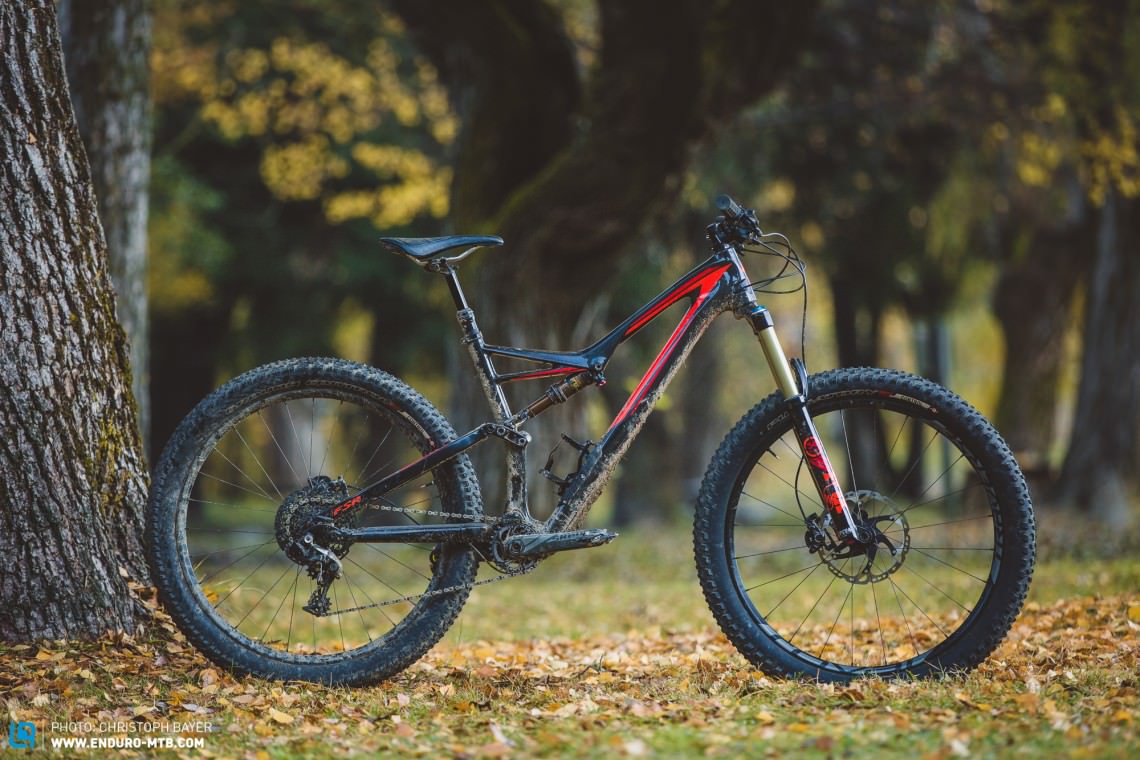
Stevens Whaka ES 27.5 vs. 27.5+ vs. 29
Read our full comparison test between the Stevens Whaka ES 27.5, 27.5+ and 29″

SCOTT Genius 900 Tuned vs. 700 Tuned Plus
Read our full comparison test between the SCOTT Genius 900 Tuned und 700 Tuned Plus
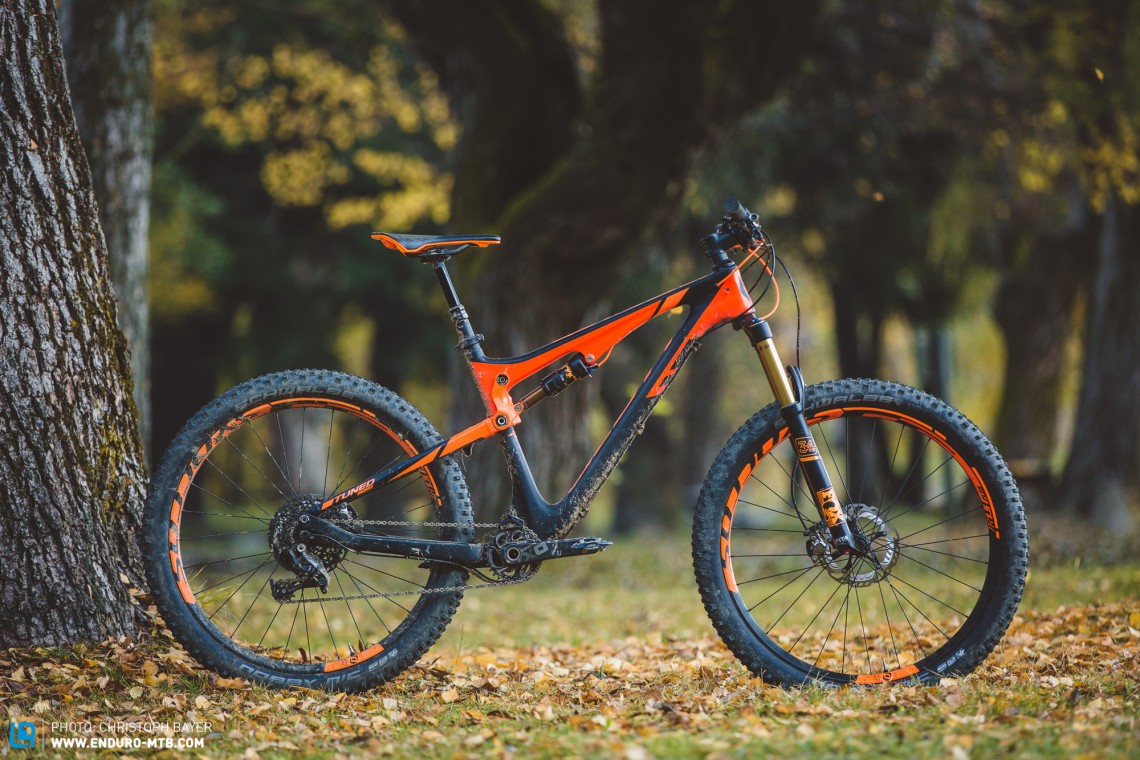
A look to the future
Plus-size tyres offer huge advantages, but there’s still a long way to go until they reach their full potential. In our opinion, there’s a road to improved performance by choosing specific front and rear tyres and setting up the ideal tyre-wheel combination with optimized tyre and rim widths. Running the correct air pressures is another tricky issue for plus-size tyres, so we would love to see this process simplified. [V3]
Maybe tyres with a width of around 2.6” on 30 to 35 mm rims could be the dream set-up for traction and agility.
Words & Photos: Christoph Bayer
Did you enjoy this article? If so, we would be stoked if you decide to support us with a monthly contribution. By becoming a supporter of ENDURO, you will help secure a sustainable future for high-quality mountain bike journalism. Click here to learn more.









